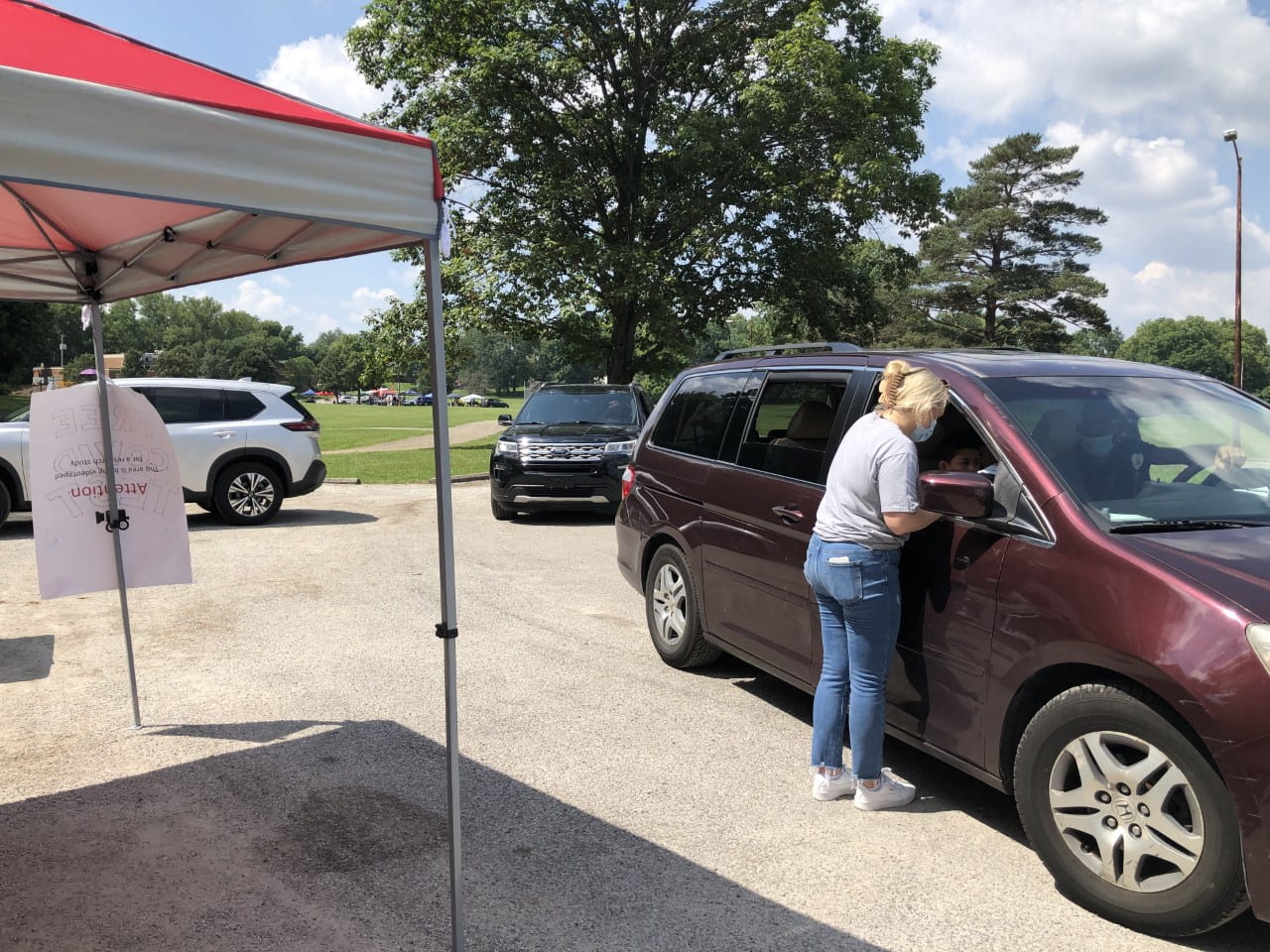
Sophie Padgett, a masters student in the College of Public Health, registers community members for a free test administered by National Guard staff at the Far East Community Center in Columbus, Ohio on Aug. 21. Credit: Courtesy of Aaron Cochran
The same algorithms used in game casinos are helping researchers find COVID-19 in Ohio.
The Cognitive Systems Engineering Lab has partnered with the College of Public Health at Ohio State and the Yale University School of Public Health to identify areas in Columbus with a high prevalence of undetected, positive COVID-19 cases by using a quantitative algorithm — the “multi-armed bandit.”
Gregg Gonsalves, associate professor in the Department of Epidemiology of Microbial Diseases at Yale University, said he has experience using quantitative models to improve the response to the HIV/AIDS epidemic, and is using this experience to help identify undetected COVID-19 cases in Columbus.
“There’s a lot of people out in the community who don’t know they’re positive,” Gonsalves said. “Some of them are going to go on to spread the disease to others, some of them may even develop serious complications of the disease. The idea is that, if I want to go get a test today, I can go down the street and get one, but there’s a lot of people that are not going to come forward, so the idea was how do we figure out where to find the most cases of SARS-CoV-2 in Columbus?”
Aaron Cochran, a graduate student in industrial systems engineering and graduate research assistant for the Cognitive Systems Engineering Lab at Ohio State, said the project’s main goal is to observe and understand how COVID-19 is spreading in central Ohio, and how it can be treated from a public health perspective.
“We’re trying to look at how public health can be paired with automated tools to better address epidemics in a more adaptable way,” Cochran said.
Cochran and other graduate assistants from Ohio State serve as the project’s boots on the ground, surveying local libraries and other government institutions with mobile COVID-19 rapid antigen testing sites where testing is administered by the National Guard.
Rapid antigen tests detect fragments of proteins found on or within the virus by testing samples collected from the nasal cavity, according to the Food and Drug Administration website.
Gonsalves said the algorithm he and Cochran use decides whether to continue looking at the area being surveyed or identify a new area to search.
“The more that we explore in one community, the more we learn about that community and how COVID is working in that community, but to get an idea about the communities as a whole, the Columbus area as a whole, or as we look broader — Ohio, United States, those kinds of things — we need to do more exploration,” Cochran said.
Cochran said the quantitative “bandits” algorithm uses positive and negative results from the most recent testing area to recommend a new area to survey, providing a small window for testing at that site.
“Over time, it’s going to start to hone in on the places that are going to give you the best chance of success in finding cases — not always. It’s always going to do a little bit of exploring, but over time, it does less exploring and more exploiting of the terrain.”
Cochran said libraries have become the primary testing focus because hospitals are too overwhelmed to participate in much outreach testing.
“We’ve been pretty much solely testing at libraries for the past few weeks and have found good results with that,” Cochran said. “They’ve been really awesome as people that naturally are generating capacity. We didn’t necessarily ask them to do much in terms of advertising, but they’ve naturally received what we’re doing well, and have broadcasted that in ways that we really didn’t have the capacity to do on our small team.”
On-the-ground testing has taken place at five of the Columbus Metropolitan Library branches since Sept. 1, including the Whitehall, Northern Lights, Barnett, Southeast and Shepard branches.
Cochran said surveying areas for COVID-19 is similar to analyzing a bank of slot machines — the more time spent playing a slot, the more the behavior of the machine can be analyzed.
Gonsalves said the development of algorithms is practical in many disciplines and can help narrow the search for “needles in haystacks” with regard to diseases.
“Any time you have to do active surveillance for public health, meaning you need to go out into the community and look for cases of a disease, this can be helpful. It’s a pretty generic algorithm in terms of its utility for public health applications,” Gonsalves said.


